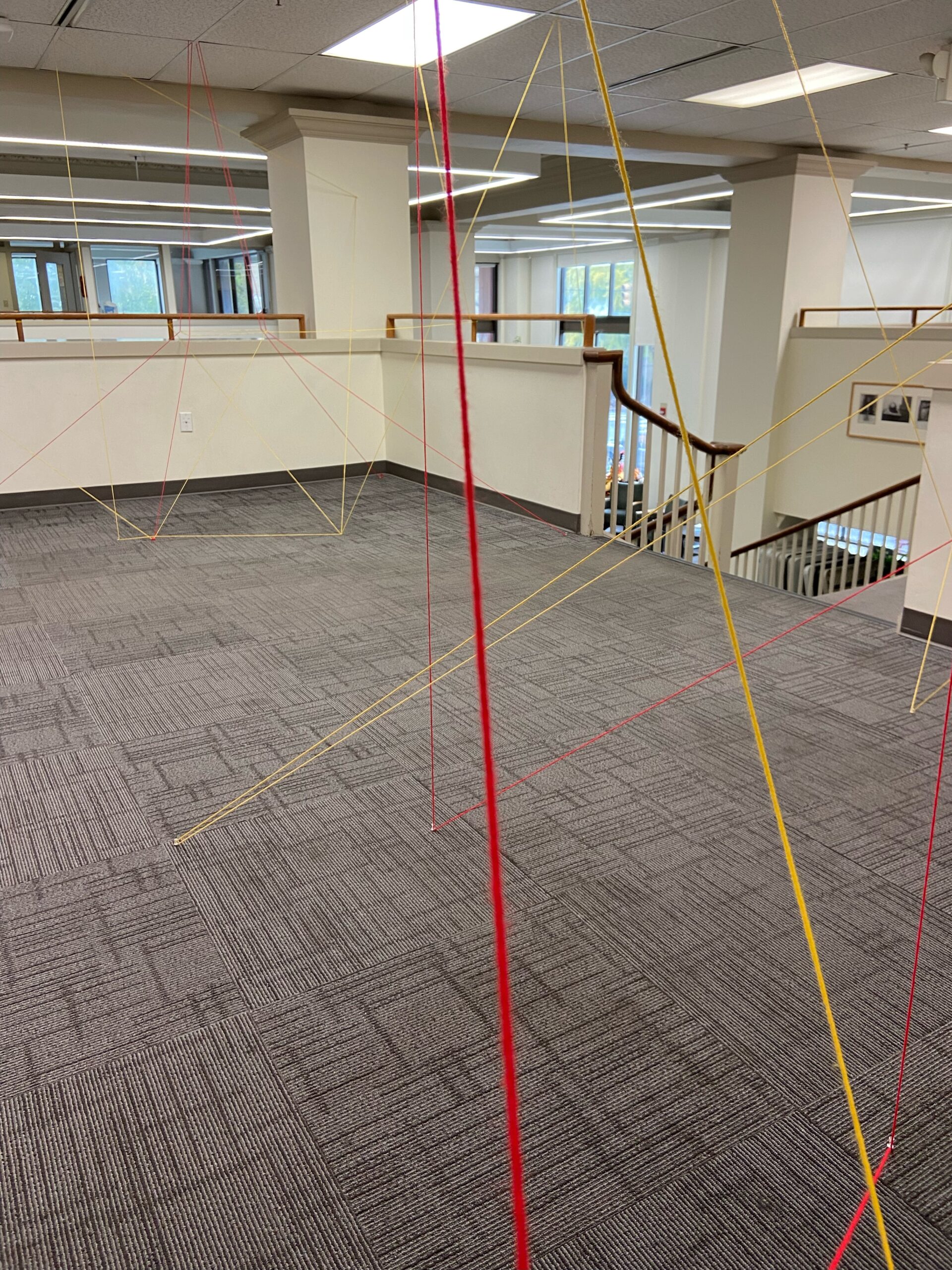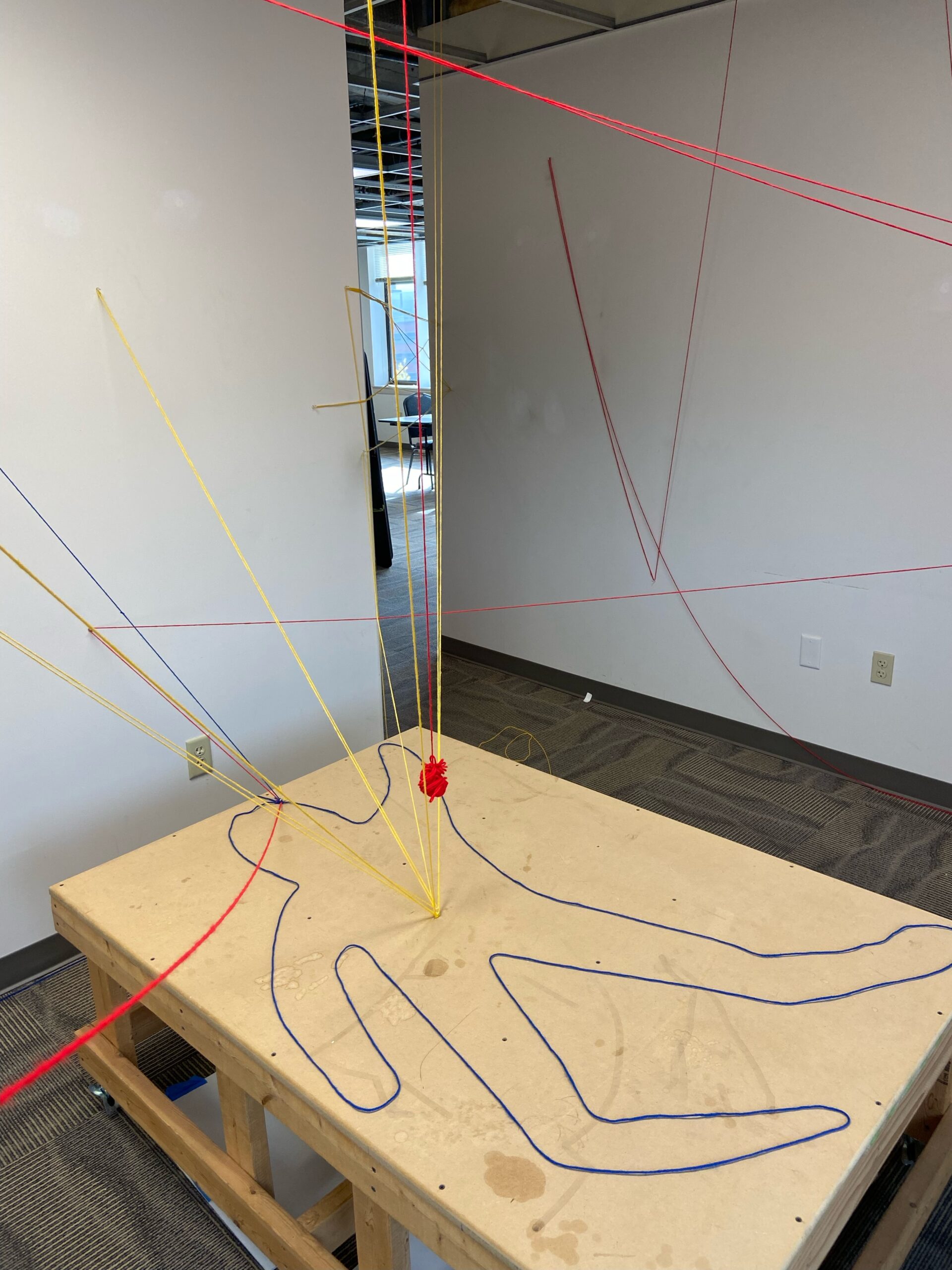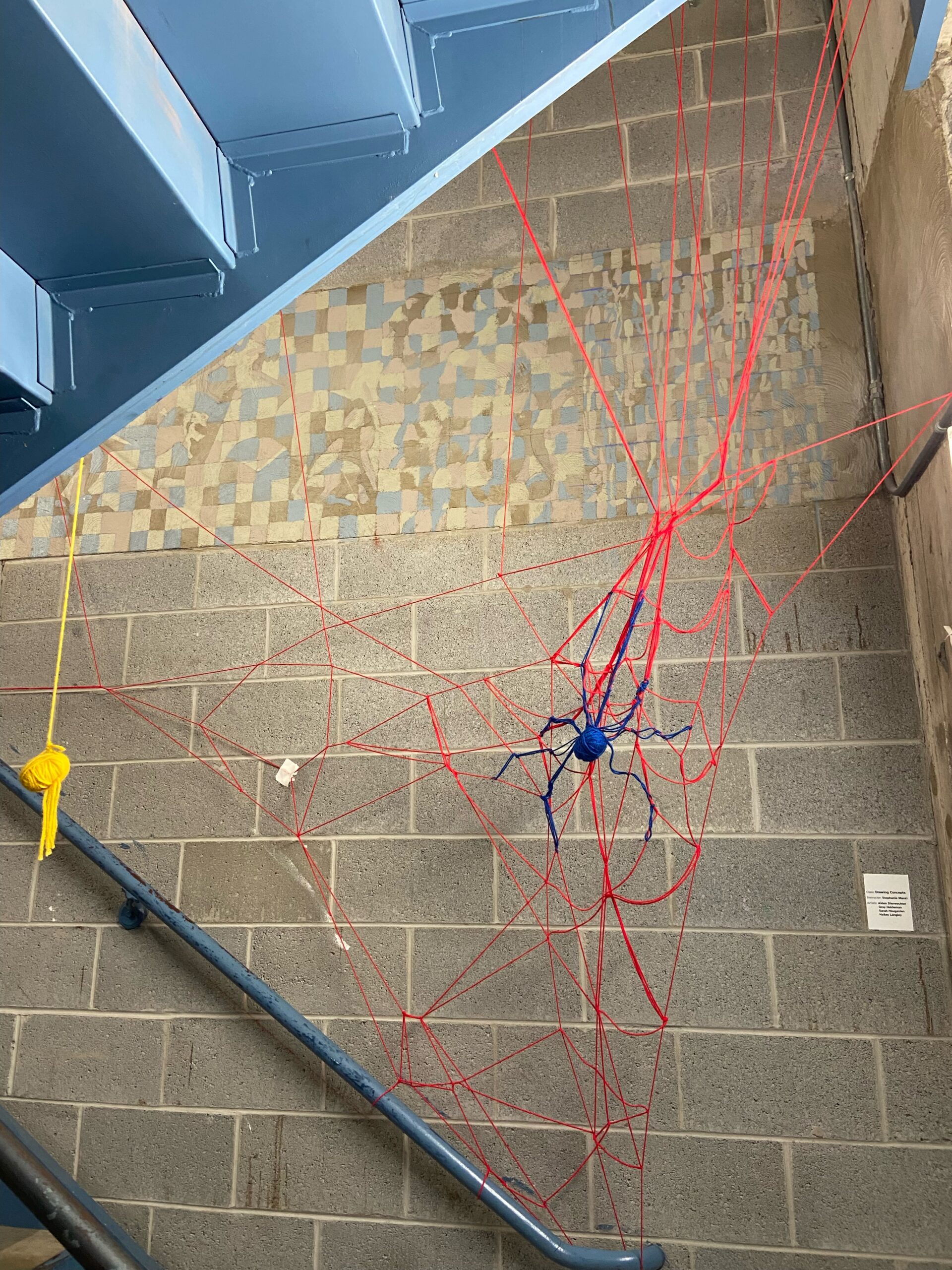‘Drawing in Space’ adds artistic drama to trio of campus locations
Wednesday, November 8th, 2023
The yellow thread stretches across the Mezzanine-level staircase ceiling, almost invisible against the white tiles.
But it links two halves of a Drawing in Space project, 3D student work by Stephanie Manzi‘s Drawing Concepts Foundation students. You also may have spotted Drawing in Space projects in other areas of the building: another is installed across from the Prince Street elevator in the second-floor stairwell; a third is across from the Water Street elevators on the way to the fourth-floor LookOut.
All of them, constructed of red and yellow yarn, with sometimes a touch of blue, are part of a class that takes the foundational skills of Drawing 1 and moving them into more applicable forms, including digital, photo, installation, and experimental. It’s a new class, one that Manzi developed with the support of Foundation Chair Bill Mammarella and Assistant Professor Kathleen Eastwood-Riaño of the Foundation Department.
“One of our first major assignments was to take a traditionally drawn work from observation and translate it into two different mediums,” Manzi says. “This was where we first used yarn as a drawing material, but on a 2D surface. It was inevitable that with each change in material the students would run into different issues and be required to find solutions. These kinds of practices are more suitable for the LiveX majors in particular, who are dealing with set design and interactive experience in which they will be problem-solving constantly.
“The assignment also dealt directly with translation of an idea, which for any form of art is incredibly important. The artist must be able to communicate and anticipate how an audience can and will interact with their project.”

A red-and-yellow yarn project in the Mezzanine stairway pulls art out of thin air.
Inspiration
The minimalist artist Fred Sandback created a number of works that used line as a tool for installation, Manzi says, cutting through space to create drawings that can be walked around and interacted with. Projects that began with a stronger material, like metal, eventually transitioned into works that, like those created by PCA&D Foundation students, were “built” using yarn.
“It is very similar to how a spider uses its web to draw in space,” Manzi reflects.
Each team of students was given the same material to work with, but very different spaces to envision and fill, Manzi adds.

Using yarn to re-imagine how a crime scene is mapped out in space.
“Our fourth-floor group connected with the idea by considering how a crime scene is mapped out in space,” Manzi says. “They wanted to connect it to something more figurative than abstract.” The stairwell group, meanwhile, “responded to the concept of how spiders use their surroundings to build webs. They were interested in the entanglement of the yarn, and also the contrast in length they could get from a single thread extending up to the next floor. Prior to our installation in that space, (other students had created) a little shrine installation. This group wanted to incorporate the other students’ work and collaborate so both works could exist together — I found that very profound and an example of how PCA&D students respect and support each other.
“Our third group responded to the geometry of Fred Sandback on one side, and then the idea of illustrating the structure of a tree on the other.”
All three projects, Manzi says, differ greatly from each other “and show the range that one project can have when students have the time and space to work as a group and explore a new material.”
‘Drawing Concepts’ artists
Cece D’Amore, Elaina Darr, Aiden Dierwechter, Gray Haldeman, Naeem Holmes, Sarah Hougasian, Reece Kane, Hailey Langley, Dahlia Navarro, Jay Ralat, Maya Reynolds, Alex Smith

How would a spider fill a stairwell? This “Drawing Concepts” class of Foundation students re-imagined the scene.
